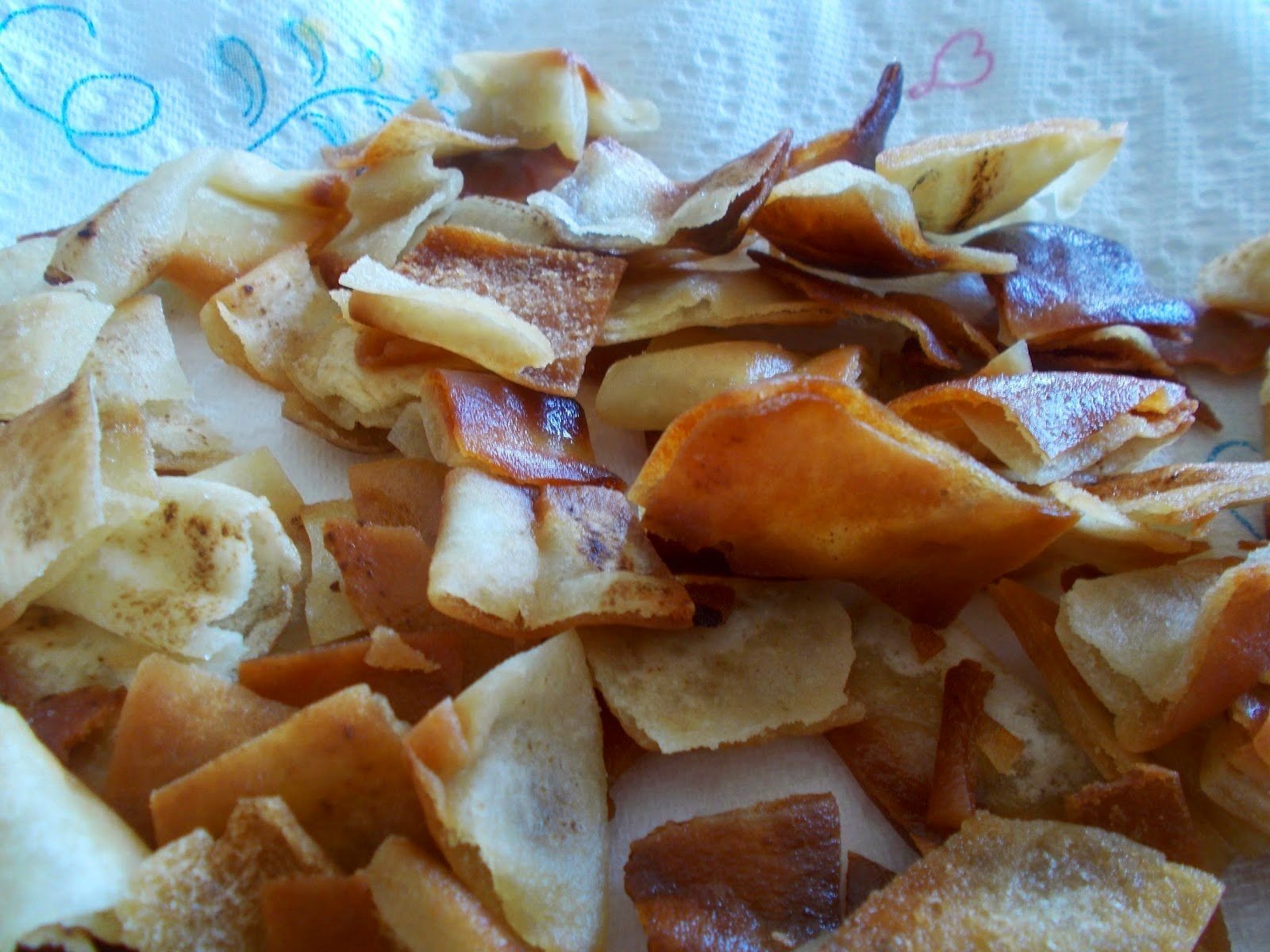Fatteh - Jordanian Yogurt and Eggplant casserole
Tart yogurt combined with a beautifully seasoned stew of eggplant, onions and beef with a pita crouton topping. One of the best Arab recipes!
What did you picture when you heard the name eggplant as a child? Probably something similar to what I did - and I thought eggs came from chickens! When I understood that plants and eggs could share the name, I was still hesitant, suspecting that the vegetable tasted of rotten eggs - why would it be purple? No way I was going to taste it and since it was not served or even mentioned in my home, it wasn't a problem.
As an adult, I was offered aubergine - what a delightful name for a lovely shiny slender vegetable, and before I knew it I had been tricked into love! An aubergine by any other name would be as delicious.
When returning to Jordan after years away, the first dish I bought from a Lebanese cook we had once frequented, was Fatteh, (fe-tay) not to be pronounced "fatty" as in what you will become if you eat too much of it. In Arabic the word "fatteh" means "crushed" or "crumbs", as in bread crumbs, or croutoned bread. I don't remember when I first had it or who first served it to me - I will admit it doesn't look nearly as appetizing as it tastes - but it is in my top three favorite Arab dishes.
As I brought the aluminum container aboard our small tourist bus and was about to partake in this romantic reunion, the aroma bumped about the bus as we did and there were others who wanted to help me eat it. As hesitant as I was to share - after all we had forgotten to bring spoons - it was wrested from my hands and passed down the bus, as creative tasters devised eating implements of yogurt lids, emory boards and credit cards to scoop out samples of the casserole.
The very nature of eggplant succumbs silkily to oil when fried and this dish, topped with fried bits of Khoubiz, (pita bread), and pine nuts is succulently smooth and richly velvetized It has such a depth of flavor; smokey, garlicky, lemony, meaty, ---all those flavors that make you pause and say, "I want to remember this." There is also a chickpea, yogurt version that is also very popular though less complex in flavors. Thin small eggplants like the variety sold in the Middle East, are recommended as they are more tender than larger ones.
Few recipes for raw eggplant exist owing to the fact that the toxin solanine, which raw potatoes contain as well, can cause intestinal distress, but once eggplant is cooked it complies beautifully with digestion. The raw product is also cursed with a bitter flavor which can come through in the cooking, though more modern hybrids are said to be less bitter. To avoid the bitterness, salt the eggplant well after slicing or cubing it and let sit for about 30 minutes. The salt causes the flesh to weep and draws out the bitterness. Rinse well, blot dry with paper towels and use as described in your recipe. Give this eggplant recipe a try and if you, like me, pictured boiled eggs growing among foul smelling leaves, this dish will wipe away those childish misconceptions!
FATTEH WITH EGGPLANT
1 1/2 pound ground beef or lamb
4 small eggplants
1/2 cup pine nuts, toasted
1 medium onion, chopped in small cubes
1/2 cup tomato sauce
2 1/2 cups beef stock
1 tablespoon grenadine molasses
1/2 cup sour cream
1 cup plain yogurt
5 cloves crushed garlic cloves
salt and pepper to taste
1 teaspoon cinnamon
1/2 teaspoon ground allspice
2 loaves pita bread
1/2 cup chopped flat-leaf parsley 2 teaspoons sumac
-Toast pine nuts in dry saute pan until lightly browned; set aside Cut bread into 1-inch squares and fry in 3 tablespoons butter until browned; set aside. Combine sour cream, yogurt, 1 teaspoon salt and crushed garlic in bowl; set aside.
-Chop eggplant into 1-inch chunks, place in large bowl and sprinkle liberally with salt and toss. Let sit for 15 minutes. Drain and rinse eggplant and fry lightly in 3 tablespoons oil in large saute pan until golden and starting to soften. Remove eggplant from pan and set aside.
-In same saute pan, melt 2 tablespoons butter. Place ground beef and onion in pan with salt and pepper, cinnamon and allspice and fry, stirring frequently until meat is browned. Drain off any extra fat. Stir in beef stock, tomato sauce and molasses then bring mixture to a boil. Add eggplant and simmer for about 15 minutes, stirring occasionally, until eggplant is tender and sauce is thickened.
-In an oven-proof casserole dish, pour the eggplant/meat sauce on the bottom and then cover with the yogurt sauce. Place the toasted pita squares on the top. Bake in 350 oven until just warmed through, about 15 minutes.
-Garnish with pine nuts, chopped parsley and sprinkle sumac on top. Serve warm. Serves 8.
Sprinkle salt on cut sides and edges of raw eggplant and let sit 15 - 30 minutes to draw out the bitterness.
Fry squares of pita bread in oil, stirring freuently, until golden.
An unusal but delicious Arab main or side course.
PERSNICKETY NOTES:
**The original recipe has you place the bread squares on the bottom of the casserole dish, then cover with meat sauce and finally the yogurt sauce. I, however, like my croutons to stay crispy so I place them on top.
**Sumac is used in the Middle Eastern diet to add a lemony pop to soups, salads and meat dishes. It is made from the ground fruit of a species of sumac bush and is a dark red/purple color. Can be purchased on Amazon or at Middle Eastern groceries.
**Grenadine Molasses: This molasses used in Middle Eastern and Persian cooking, is a thick syrup made from pomegranate seeds, sugar and lemon, is dark purple in color and adds a tangy, sweet zest to dishes. It is available in Middle Eastern Groceries. (To substitute in this recipe use 2 tsp. regular molasses and 1 tsp. lemon juice)





